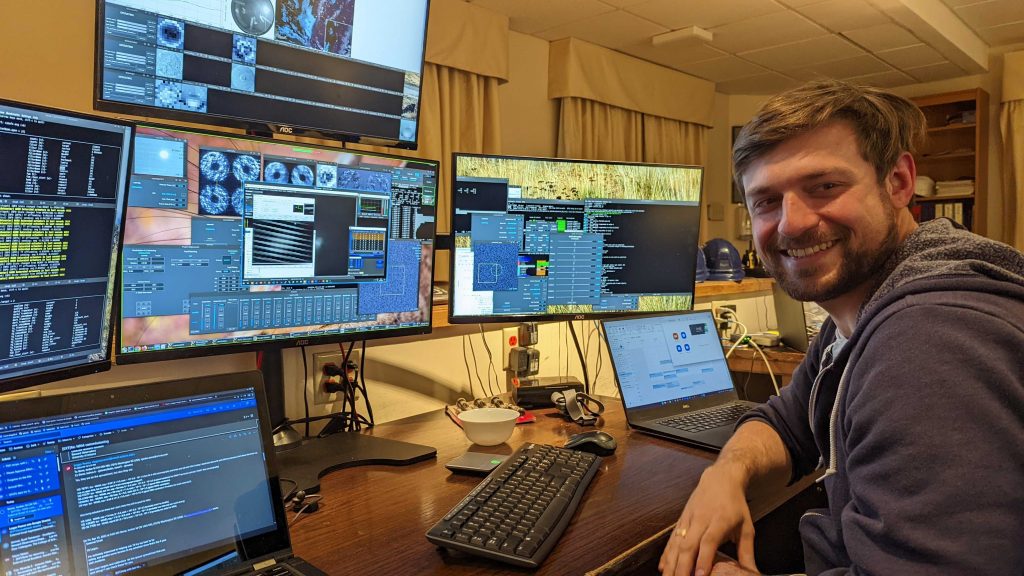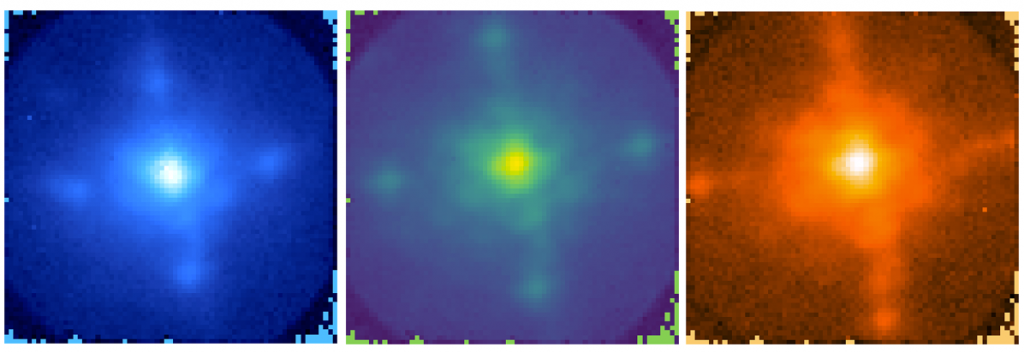It is quite a late morning while I am writing this blog post. We had a very successful first night of commissioning of VIS-X. VIS-X is the Visible Integral-field Spectrograph eXtreme (VIS-X). Of course everything we do is extreme. So the spectrograph also had to be extreme. VIS-X is the project that I have been working on in the last two years. Its goal is to take spectra of exoplanets and use that to characterize what’s in them (of course everyone wants to search for signs of life ;-)). After multiple day of aligning, I finally was able to get everything up and running. And we were able to use VIS-X on-sky!

One of the challenges with VIS-X is the acquisition on-sky. MagAO-X already has a small field of view of a couple arcseconds and, the field of view of VIS-X is even smaller! We can only see things with 0.55 arcseconds, that’s about 1/7000th of a degree.

The first multi-spectral images of VIS-X + MagAO-X. The colors correspond to the wavelength range of 450 nm (blue, left) to 950 nm (red,right). The next few night will be very exciting when we will try VIS-X on more challenging targets.
Using new instruments and observing is always exciting. However, sometimes observing is just a lot of waiting and it can be very tiring. Everyone deals with that in their own way.

VIS-X has two different observing modes. A low spectral resolution mode and a high spectral resolution mode. We did the commissioning of the low-res mode last night and to switch to high-res, I have been aligning after a full night of observing. My current feelings are well captured by this dutch song of today.